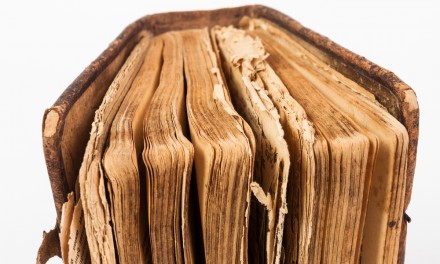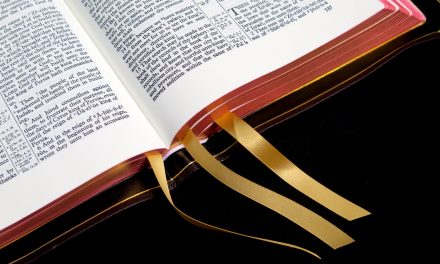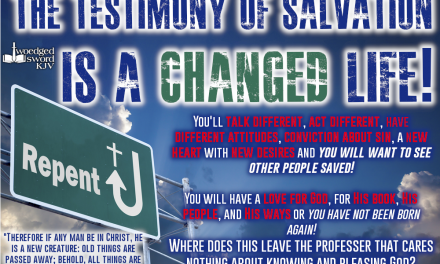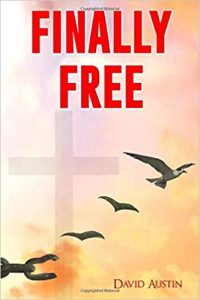Musical Instruments Ordained for the House of the Lord
In these days in which Christians find themselves, with the world’s ways so prevalent in most churches we often wonder “Is any and all styles of music appropriate for the church house? Are any and all musical instruments to be employed in our worship of our Lord and Savior?” We find many “praise teams” in churches using electric guitars and drum sets. Many refer to Psalms 149 and 150, or 68 and 81 to advocate for their use in the Lord’s House. Though these four Psalms call for the use of the tabrets and timbrels in the praise of the Lord, do they really tell us that these are to be used in the music ministry in the Lord’s house.
1. Are any and all musical instruments to be appropriated in our worship of our Lord and Savior?
To answer these questions we need to look at the Scriptures and attempt to discern if they address this issue, and if so, what do they tell us. Though we as Christians are not under the Law of Moses, we do find much in the Old Testament that gives us insight and instruction for the right and proper types of instruments of music to use in the House of God. See Romans 15:4 and 1 Corinthians 10:11.
In regards to the tabret and timbrel, which both are similar to our modern tambourine, we would refer to these as the percussion instruments. They do not sound a note of identifiable pitch, but rather a tap and or a rattle. Wilson, in his OT Word Studies says that both the tabret and timbrel were basically the same instrument, from the Hebrew words ToPH (timbrel, tabret) and TaPHaPH (the verb of ToPH) which is translated taber or tabret. We likely get our English verb tap from this Hebrew word. Wilson renders TaPHaPH “a drum, tabret, timbrel; an instrument of joy, which may have taken its name from the sound.” He goes on “In th East it consists of a thin wooden rim covered with membrane, and hung around with brass bells or rattles; it is used chiefly by dancing females.” Sounds just like our modern tambourine.
These were used by the prophetess Miriam, Moses’ sister, along with the other women as they sang their song of praise to the Lord for His deliverance from the army of Pharaoh at the Red Sea (Exodus 15:20). We also see the timbrel used with dance by Jephthah’s daughter when she came out to greet him in celebration of his victory over the Ammonites and upon his return to his family. We see then that these were typically the instruments used by women, along with joyful dancing, in celebrations. Also see 1 Samuel 18:6.
But its use was not limited only to the women of the Old Testament. We see that a group of prophets played a tabret and that Saul, under direction of the Holy Spirit, went with them and himself also prophesied in 1 Samuel 10:5.
The next instance where we find timbrels or tabrets used is in 2 Samuel 6:5 upon the occasion when–along with all types of musical instruments of fir wood including harps, psalteries, cornets(M’Na’N’a- a sort of rattle) and cymbals—David first attempted to bring up the Ark of the Lord to Jerusalem. As we know, this first attempt failed because it was done in a manner contrary to the commandments of the Lord. It was not carried with staves by the Levites, but on a cart. Incidentally, that is how the Philistines had sent it back to the Israelites at Beth Shemesh. David was careless and used the convenient, worldly method to transport the Ark, rather than the method that the Lord had clearly commanded by Moses in Exodus 25:13-15 and Numbers 4:1-15..
Upon the death of Uzza when he touched the Ark, David refused to go any further in his attempt to move it to Jerusalem. In 2 Samuel 6:9 we read a key statement, “And David was afraid of the LORD that day, and said, How shall the ark of the LORD come to me?” David knew something wasn’t right, otherwise the Lord would not have struck Uzza dead. So he stopped until he could figure out how to properly bring the Ark of the Lord to the tabernacle he prepared for it in Jerusalem.
In 1 Chronicles 13:12 we find the parallel account. 2 Samuel does not give all the answers that David discovered and implemented. But we do find his answers to the problem in 1 Chronicles 15. There are three key steps he took to rectify his error and to prepare for the bringing of the Ark to its new home in Jerusalem, but also in how to properly conduct the ministries of service in music at the House of the Lord.
The first step we find in verse one, “And David made him houses in the city of David, and prepared a place for the ark of God, and pitched for it a tent.” The word tent is from ‘oHeL which is also translated tabernacle, as in 2 Samuel 6:17. David made sure that the Lord’s tent was ordered according to the commands of Moses, as the dwelling place for the Ark of the Lord.
Secondly, we see in verse two, “Then David said, None ought to carry the ark of God but the Levites: for them hath the LORD chosen to carry the ark of God, and to minister unto him for ever.” David now made sure that the Ark was transported as ordained by the Lord according to Numbers 4. This is covered in verses 3-15. No hand of man would touch it. It would be carried by the Levites, the sons of Kohath, and none others.
Thirdly, we read in verse sixteen, “And David spake to the chief of the Levites to appoint their brethren to be the singers with instruments of musick, psalteries and harps and cymbals, sounding, by lifting up the voice with joy.” This probably occurred just prior to the Ark being successfully brought up to Jerusalem by the Levites “after the due order(13).” David was determined to have the ministry of music also follow “after the due order” upon its travel to Jerusalem from Obed-Edom’s house. And so, David set out for the Levites, in certain ranks, to conduct the service of ministry in singing and musical accompaniment. This is detailed in verses 16-24.
We can certainly understand the joyfulness on the part of all the house of Israel on the previous occasion, and thus the tabrets employed by the house of Israel in accompanying the Ark up to David’s capital city, the City of God. They were playing (laughing) and most likely dancing with rejoicing. But as we know, the Lord intervened for their lack of “due order.”
After David’s correction of the failed first attempt, we no longer see timbrels and tabrets employed in connection with the service of music in the House of the Lord. Perhaps it was because females were not allowed to enter as close to the sanctuary as what the Levite men were. But I doubt that is the reason. As we’ve seen in Saul’s case, men also played the tabret. I believe that it has to do with the type of instrument that it is, a percussion instrument that does not produce an identifiable pitch of music.
We do however see other classes of instruments that were “ordained” by David, Gad and Nathan (the Lord’s prophets) and commanded by the Lord Himself. We find this list in 2 Chronicles 29:25. The principle quality to note of each of the category of instruments is that each one is capable of producing a note of an identifiable pitch, unlike the tabrets and timbrels. The list included: cymbals, psalteries and harps. But this is not the limit of instruments used in the Lord’s House.
We also find trumpets and cornets(ShoPhaR- trumpet with clear, shrill sound, a ram’s horn) that David commanded along with the cymbal, harp and psaltery in 1 Chronicle 15:16, 28. These were used in the successful second attempt by David to bring up the Ark to Jerusalem. He also at this time commanded the chief of the Levites to set up the ranks of the singers and musicians to serve in the presence of the Ark and then later in the temple constructed by his son Solomon. These instruments in the Lord’s service are seen also in 1 Corinthians 15:6, 20, 21, 24, 28; 16:5, 6, 42; 25:6; Ezra 3:10.
In 1 Chronicles 25:1-3 we find that the players upon the harps and psalteries were to use these to “prophesy.” We need to remember that to prophesy means either to foretell a future event, or to tell forth the works and wonders and commands, admonitions and exhortations of God. We find both in the Psalms. Some prophesy future events, especially concerning the Messiah Jesus. Psalms 2, 22 and 110 come quickly to mind along with many others. And nearly all tell forth the works, wonders, admonishments, rebukes, exhortations and commands of the God of Israel.
We see above the complete list of the category of instruments to be used in the House of God in ancient Israel. These were not commanded in the Law of Moses (other than the silver trumpets of the priests, Numbers 10:2 and the ShoFaRs, translated trumpets, in several verses). But some four hundred years later they were established by king David.
Also, we need to notice that these instruments of music for the service in the House of the Lord are the ones that were “commanded by the Lord by His prophets,” 2 Chronicles 29:25. Ezra 3:10 tells us the trumpet and cymbal were set in place “after the ordinance of David king of Israel.” These “were for the service of the House of God” according to 1 Chronicles 25:6. I think it should be clear by now that certain types of musical instruments were established to be used for the praise and worship of God in the House of God. Also, there were types of instruments that were excluded, most notably the percussion instruments that do not sound a note of identifiable pitch.
Let us look at the list of all the instruments that would have been used in the Lord’s House: trumpet, cornet (SHoPHaR), cymbal, psaltery, harp. Some of these instruments have not been used, or else have changed considerably over the centuries since David, Gad and Nathan ordained them. But we can get an understanding to help us see what type of instruments the Lord is pleased with to have played in His house.
The Trumpet.
The silver trumpet was probably a slender tube with a bell end. It would not have any reeds to finger to change the note, but would rely upon the lips and breath of the player to change pitch, much like today’s bugle. The main point being that it could produce various notes. In Numbers 10 it was used to call the Israelites to gather and also to march out from its camp. [Perhaps it was used by the Priests at the Temple to call the congregation to gather and also to close the assembly at the end.]
The Cornet.
The Cornet, or ShoPHaR, was a ram’s horn that was sounded for various purposes. One was to sound an alarm. It was also capable of sounding various notes, just as the silver trumpet, by the breath and lip vibrations of the player. It together with the silver trumpet comprised the instruments of what would be called the brass and wind instruments of today’s orchestras.
The Cymbal.
Next, we find the cymbal. This was made of brass and occurs only in the dual number. It might possibly have been two cymbals struck together against each other(?). It would only produce one note of an identifiable pitch. It was the only instrument that would be found in today’s percussion section of an orchestra.
The Harp.
The harp, of ChiNoR, was most likely a U shaped wooden instrument with a bar across the top that had strings attached and strung down to the base of the instrument. The strings would be tuned to different notes(pitches) and it would be played by striking one or more strings at a time. Today there are instruments being made that are very similar and are called David’s Harps, or David’s Chinors. It along with the psaltery would comprise the section know today as the strings of the orchestra.
The Psaltery.
The paltery is probably the least known exactly of what it resembled and comprised. It probably was made of fir wood, 2 Samuel 6:5. The Hebrew word translated psaltery is NeBeL. This word is sometimes translated bottle or pitcher and denotes the shape of the instruments. But most often it is translated psaltery and in Isa 5:12 and Amos 6:5 is translated viol. The viol in the 16th century was a viola, similar shape but higher pitch than today’s violins. Perhaps that is what the psaltery was, a precursor of today’s violin and mandolin families of instruments. Most likely the strings were struck by the fingers to produce its various notes/pitches. Strongs says it is “2) harp, lute, guitar, musical instrument.” The lute was a precursor of today’s mandolin. Regardless, what we find with the harp and the psaltery is the strings section of the modern orchestra. (I personally enjoy playing the mandolin and switched to it from banjo a few years ago because it impressed me to be more Biblically acceptable than the banjo.)
It should be clear that the instruments for the service in the Lord’s House each was capable of sounding at least one note of an identifiable pitch. While there was not a place found for the tap and rattle of unpitched percussion instruments, there was a great variety of instruments capable of blending together to produce a beautiful, melodious and harmonious sound. But also we must remember, the instruments were not the focus of the music, but the words sung by the singers were to be the dominant sound. The musical instruments were there to accompany and to help lead the singer(s) to lift their voice(s) in praise to the Lord God, the Almighty of Israel.
A rule of Bible interpretation, in developing a doctrine, is to let the clear verse or passage have more weight than the less clear, or stated another way, the unclear must be determined by the clear. We need to keep this in mind as we try to gain an understanding of an apparent contradiction regarding the use of tabrets and timbrels in the praise of the Lord as mentioned in the four Psalms named above. With this in mind, let us proceed from the clear to the less clear.
How can we understand the use of tabrets/timbrels in the four verses found in the book of the Psalms, the Old Testament Hymnal? Let us look at them as we see them in Psalms 68:25; 81:2; 149:3 and 150:4. Before investigating, let us be cautious in using the call for these instruments as a justification for introducing types of instruments not commanded by the Lord for the music service in His house.
Psalm 68:25
“The singers went before, the players on instruments followed after; among them were the damsels playing with timbrels.” Soncino’s Commentary on the Bible, the Book of Psalms by A. Cohen says of this Psalm concerning the occasion of its writing “it might be one of his several triumphs over neighboring enemies, or the removal of the Ark to Zion.” Verse 17 would fit well with the bringing of the Ark to Zion from Gibeah, where Saul’s home was and where apparently the Ark was then located, 2 Samuel 6:3.
This Psalm in verse 25 is speaking of what the damsels did, playing timbrels. This description fits well with what we see in the rest of 2 Samuel 6 and the disaster that occurred when Uzzah and his brother transported the Ark on its journey towards Jerusalem. We do not see here an endorsement of the use of the timbrels/tabrets in the service in the house of the Lord.
Psalm 81:2
“Take a psalm, and bring hither the timbrel, the pleasant harp with the psaltery.”
According to A Cohen, this Psalm was used in celebration of the fall harvest festival, the Feast of Tabernacles, which commemorated the Lord being with the children of Israel while they lived in booths forty years in the wilderness. He says “According to many commentators this verse(vs 1 in the KJV) is addressed to the laity, [the next verse] to the Levites (verse 2 in the KJV), and the following verse (verse 3 in the KJV) to the priests.” If that is the case, then we find a command given here by Asaph for the Levites to use the timbrel in the service at the house of the Lord. On first glance we would seem to have a contradiction.
How can the apparent contradiction be resolved? The clear command regarding the instruments for use in the Lord’s house we have already seen. There are some possible resolutions. One, we must find more about Asaph. Who was he and when did he live and/or pen this psalm? Was it before or after the commandment by the Lord that did not include the tabrets/timbrels? We know that David did not begin writing his Psalms upon his ascension to the throne of Israel. He had surely begun as a young man. We see him as a lad playing the harp before Saul and soothing the soul of that king wracked by the evil spirit. We see also his godly courage as a youth when he battled and killed Goliath. It is almost certain that he composed many of his psalms while tending the sheep for his father.
We find Asaph in connection with the musical service of the Lord mentioned in 1 Chronicles 15:9 “So the singers, Heman, Asaph, and Ethan, were appointed to sound with cymbals of brass;” This Asaph was a contemporary of David and also very gifted in singing and composing of psalms. He wrote twelve altogether, 50 and 73-83. It is entirely possible that he had penned this Psalm prior to the establishment of the instruments of God (1 Chronicles 16:42). This would seem a reasonable resolution of the apparent contradiction. I am open to other suggestions, but this should be satisfactory.
Psalm 149:3
“Let them praise his name in the dance: let them sing praises unto him with the timbrel and harp.”
A Cohen states concerning the occasion of this Psalm that it was “composed to celebrate a victory. If it is connected with the other Psalms of this group, the occasion was the triumph of Nehemiah over the unfriendly neighbours who schemed to thwart his plans.” Verse 6 would fit well that context. See also Nehemiah 4:17.
In this context we do not see mention of the temple or the sanctuary. We see in verse 3 also the call to “praise His name in the dance” along with the timbrel and harp. This speaks of a celebration of victory, as Cohen mentioned. It is something that would occur following the battle. But also it probably occurred prior to the battle, for verse 6 speaks of a call to be doing something during the preparation for battle, “let the high praises of God be in their mouth, and a two edged sword in their hand.” We see here praise of the Lord both before the battle, as well as celebrating the victory He delivers. Verse 6 also reminds us of Paul’s exhortation to take in hand the sword of the Spirit which is the word of God, Eph 6:17.
Psalm 150:4
“Praise him with the timbrel and dance: praise him with stringed instruments and organs.”
A Cohen again comments on this Psalm:
“The group of praise Psalms and the whole Psalter reach their culmination in this unequalled hymn of extolment, ‘the grandest symphony of praise to God ever composed on earth’ (Oesterey). No more fitting close to this section of sacred Hebrew literature could be conceived than the outburst of ecstatic exultation which rings through this song.”
The sanctuary mentioned in verse 1 is that of His throne in heaven, for it is associated with the firmament. The whole of Israel is here called to yield every instrument and every voice in praise to the Lord. Cohen mentions that you can hear the crescendo gaining in volume as each instrument is called and it joins in with all the previous and concludes with a tremendous grand symphony of praise and exultation to the Lord God Almighty.
He mentions the trumpet first, which was played by the priests. Then he brings in the psaltery and harp played by the Levites. Next he calls on the timbrel and dance as the women of Israel would join in. Next the call is made to the rest of Israel’s lay community to join in on the laymen’s stringed instruments and organs (ancient wind pipes of some type). The last isntruments called for were the cymbals played by the Levites. Now, every musical instrument in the nation of Israel was uniting together in sweet harmony blaring out the praises of the Lord. Finally, the invitation was given to “let everything that hath breath praise the Lord. Praise ye the Lord.”
We see here a community wide engagement in praise of the Lord with every single instrument and voice available. What a conclusion for this book of Psalms.
As is clear from the ordinance of David and the command of the Lord, not all the musical instruments mentioned in these four Psalms were fit for the service of music in the House of the Lord in the Old Testament. The New Testament is silent on the types of musical instruments to be used in the churches. The focus in the New is upon the heart and the voice of each member, see Ephesians 5:19, as we sing psalms, hymns and spiritual songs. As far as I have found the only instruments seen in heaven in the book of the Revelation are trumpets and harps. Jesus won’t be jamming. Electric guitars will not be screeching. Drum sets will not be beating. These are the world’s instruments, used to satisfy the fallen, carnal nature of mankind.






